Object, plastic, string, metal, acrylic resin, rope, flashlight
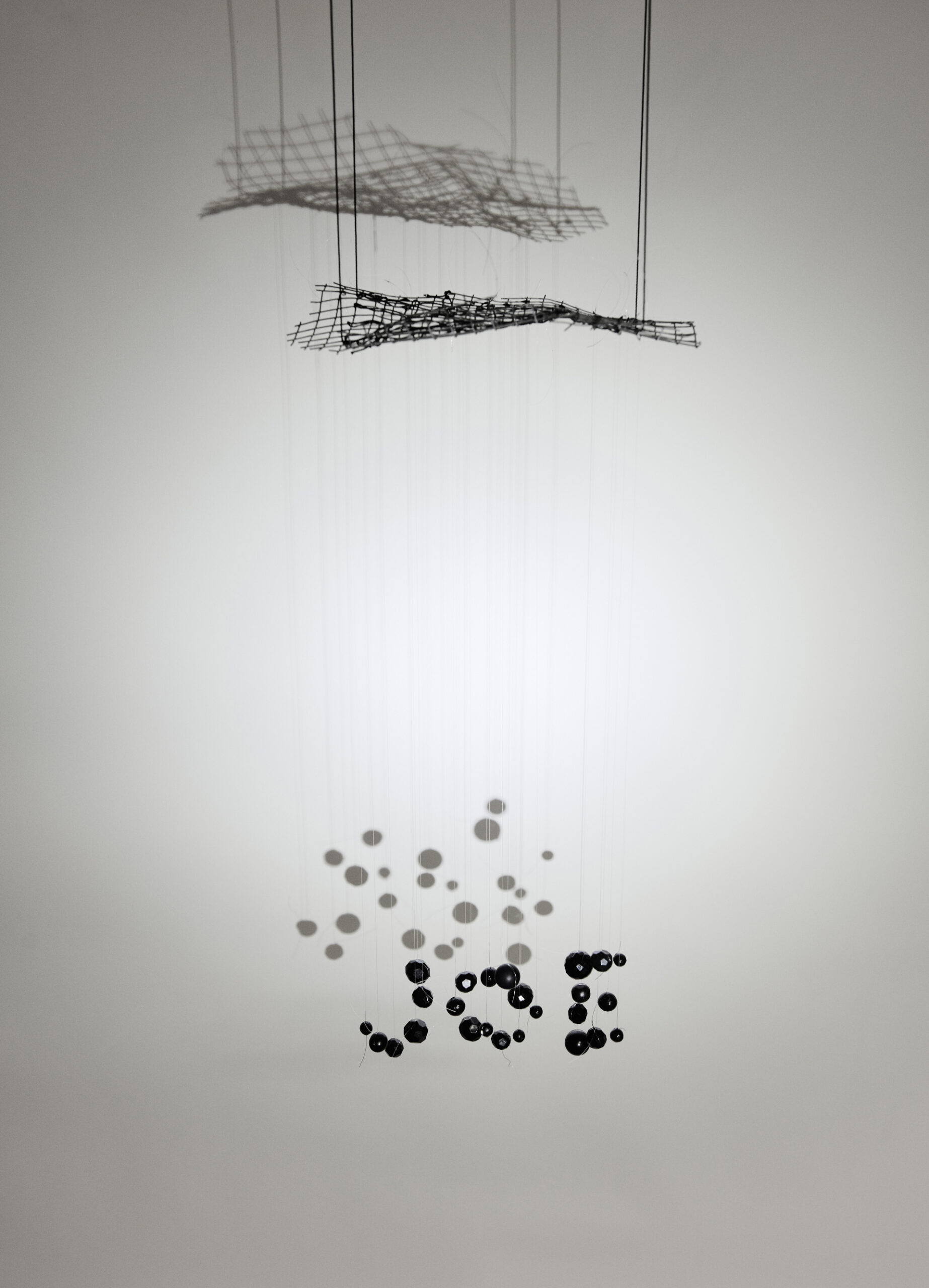
Exhibtion: Waitingroom, Tokyo (JP)
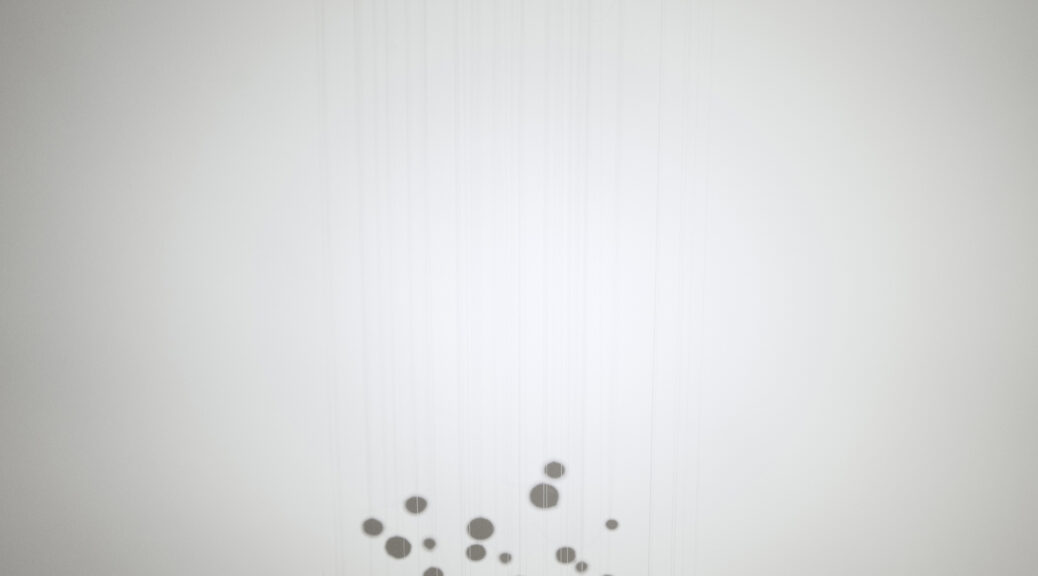
Object, plastic, string, metal, acrylic resin, rope, flashlight

Exhibtion: Waitingroom, Tokyo (JP)
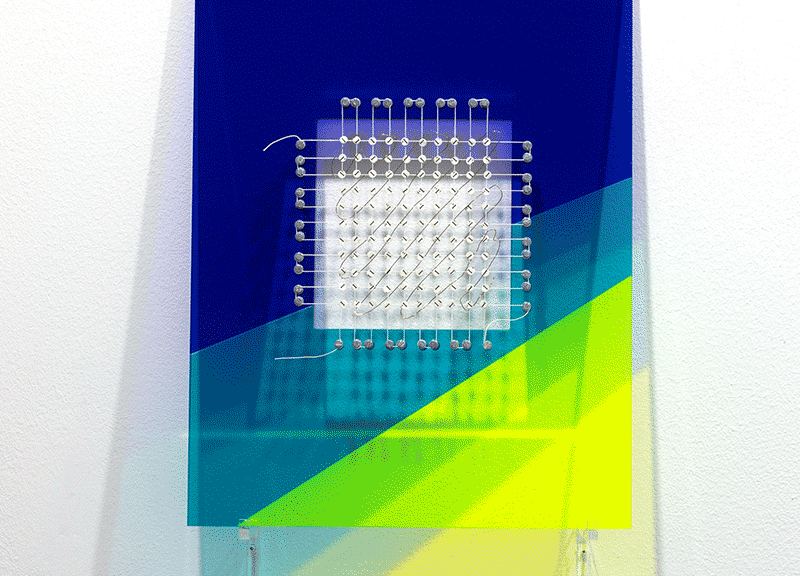
– on going
Acrylic plate, copper wire, string, book glue, metal,
all “I” – words from the various SF novels
“Core Rope Memory” is one type of the ROM Memories (ROM = Read Only Memory). This term is also known as “LOL Memory” (Little Old Lady Memory) because the women of NASA’s space factory woven these memories. In the 1960s, this type of memory was used for NASA’s early experiments during the Mars Space Program and for the Apollo Guidance Computer. Software pioneer Margaret Hamilton had successfully developed “Core Rope Memory” for the Apollo space program.
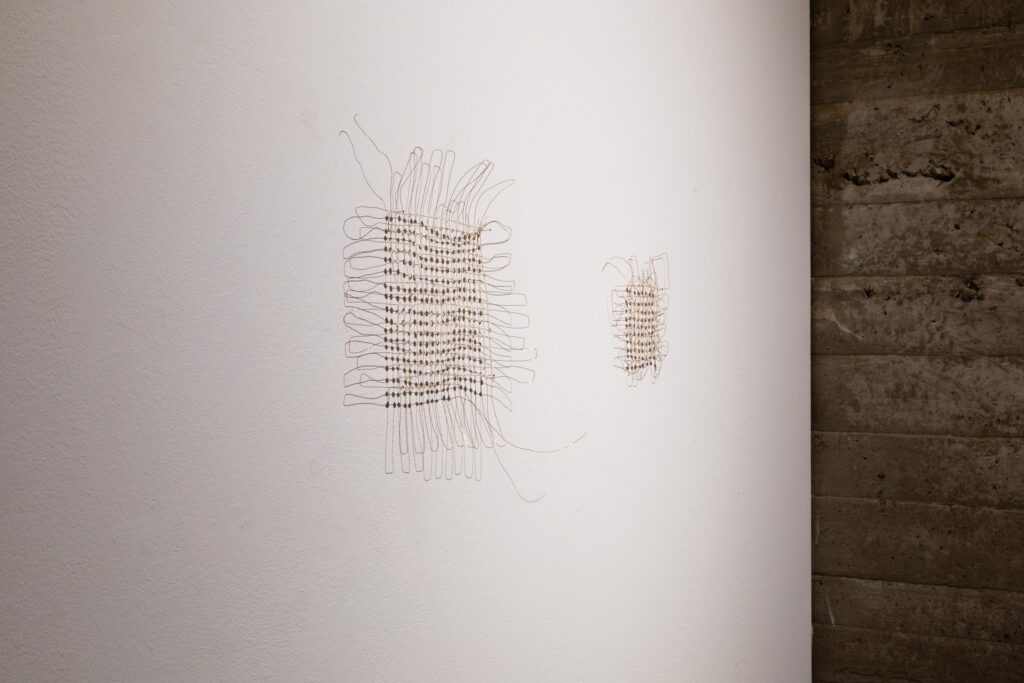
Books, cut out of the “I”:
„The Ship Who Sang“ (Nanne McCaffery, 1969)
„Love is the Plan The Plan is Death“ (James Tiptree Jr, 1973)
„And I awoke and found me here on the cold hill’s side“ (James Tiptree Jr, 1972)
„The Girl who was plugged in“ (James Tiptree Jr, 1974)
„The Women men don’t see “ (James Tiptree Jr, 1973)
„Houston, Houston, do you read?“ (James Tiptree Jr, 1976)
„We who stole the dream“ (James Tiptree Jr, 1978)
„And I awake and found me here on the cold hill’s side“ (James Tiptree Jr, 1972)
„With delicate mad hands“ (James Tiptree Jr, 1981)
Exhibitions: Galerie Nanna Preußners, Hamburg (DE) / Waitingroom, Tokyo (JP) / Konya 2023, Fukuoka (JP)
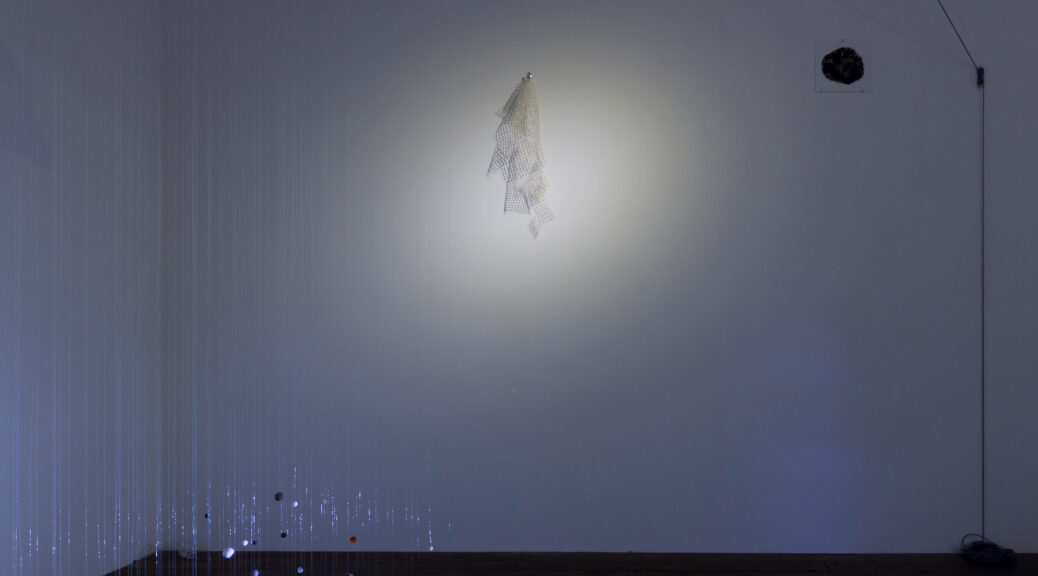
string, book glue, 60 x 50 cm, all “I” – words from the book “Solaris” (Stanislaw Lem, 1961)
Exhibition: waitingroom, Tokyo (JP)

Metal, plastic, glass, lead, paper, fishing line, mirror, LED light, size variable
Exhibitions: Ermekeilkaserne, Bonn (DE) / Schloß Agarthenburg, Agarthenburg (DE)
Naho Kawabe was born in 1976 in the southwest Japanese port city, Fukuoka and grew up there. The city of 1.5 million inhabitants is located on the southern main island of Japan directly across the sea from South Korea. This border area has become famous through several historical sea battles, in particular the victory of a small Japanese fleet against the numerically superior Russian naval forces in the so-called Korean Strait near Tsushima in 1905. This event is still regarded by the non-European countries today as the impetus for a new self-confidence with which the countries of Asia and Africa freed themselves from the colonial fetters of the Western powers in the course of the 20th century (cf. Pankaj Mishra, From the Ruins of the Empire, 2013). Fukuoka came back into the historical spotlight in 1945 during the Second World War as a target for the Americans, whose plan to drop their second atomic bomb on the city in August. It only prevented bad weather. Today, Fukuoka is a popular shopping spot for Korean and Chinese tourists coming by ferry and airplane across the sea. Kawabe lived in Tokyo from 1996 to 1999, where she studied fine arts and media art at Musashino Art University. When she moved to Germany in 2001, first to Bremen, then to Hamburg, she began studying at the Hochschule für bildende Künste under the Fluxus artist and Professor Claus Böhmler, supported by a DAAD scholarship, and graduated in 2006. Since then, she has been working as an independent artist in Hamburg with increasing exhibition activities in Germany and Japan.
The experience of oscillating between Asian and European culture is an aspect of the artistic work of Naho Kawabe. The works she presents here in seven rooms are exemplary of an aesthetic program that refers on the one hand to the abstract aesthetics of Japanese culture, which are set in black and white, and on the other to the narrative tradition of European art and its newer forms ranging from installation to photography and video. In this field, Kawabe uses the qualities of certain self-selected materials such as coal and its antithetic counterpart: light.
The material charcoal has been a trademark of Kawabe’s installations for years, between minimalist strictness and figuration. At the same time, the charcoal itself already carries meaning with special aesthetic qualities and social implications. Charcoal is a raw material that has a long history – from its traditional artistic use as a drawing pencil to its use for objects by Arte Povera artists such as Jannis Kounellis (cf. Monika Wagner: Das Material der Kunst, 2001, p. 244ff). Historically, coal is the essential energy on which, on the one hand, the wealth of the industrial bourgeoisie is based and with which social and ecological tragedies were triggered. The range of these tragedies extends from the events in the mining districts of Colorado, written by Upton Sinclair in 1913/17 in his famous novel “King Coal”, in which the inhumane exploitation of fossil fuels becomes a symbol of exploitation and racism, to the coal colonialism of our time or the current debates about CO2 emissions at various climate conferences. When Naho Kawabe was born and went to school in Fukuoka, at the end of the seventies, the coal industry in Japan and Europe fell into crisis. Since then, the Japanese government has relied exclusively on nuclear energy, with all the consequences up to the catastrophe in Fukushima in 2011, which Kawabe experienced directly, as she was in Tokyo at the time. Later she visited the disaster area twice, shot videos and took photos.
In addition to the use of coal, the topic of energy has been a focus of Kawabe’s artistic work since then. Her coal installations are temporary, because the work consisting of black dust are swept together after the end of the exhibition and disappear, existing only on photographic documentation. The charcoal powder, which the artist prepares using a coffee mill, is scattered through the meshes of lace curtains and not fixed. The figures, ornaments, signs and lines that form on the floor are the negative of the curtains used like a stencil.
Charcoal is a “primordial substance” that lay under the ground for thousands of years and was created by pressing trees and plants whose source of life was light. Coal is lightless, is a matt and seems almost dead proof of formerly vegetation. The forms scattered to the ground by Kawabe often in turn represent plants, as if the artist wanted to give the coal back its original appearance for a moment. The coal installations are also site-specific and refer to the construction and lighting conditions of the exhibition space. By the way, a biographical background plays a role in the choice of coal as a material; it should be mentioned that Kawabe’s grandfather was an engineer in mining.
With the other artworks with coal shown here, in which the black dust is fixed to glass and forms a continuous horizontal line in individual frames hung at an incline, the artist also makes reference to her own history: the experience of travelling between cultures brings the horizon as a metaphor of boundaries and their transgressions into focus in Kawabe’s work as an interface, as restriction and possibility. Behind the horizon the journey continues – behind it lies the danger. The line between land and water or sky symbolises the dangerous as well as it awakens desires (cf. Waltraud Brodersen, in: Naho Kawabe. Observer Effect, Berlin 2013). This represents the first visual link to the exhibition title “delikatelinien” (delicatelines), because the delicate is not only something appetizing, fine, but also something fragile, sensitive, possibly failing – in diplomacy the expression exists “being on the way in a delicate mission”.
The experience of different cultures has also sharpened Kawabe’s interest in the issue of restrictive boundaries and transcending movement – on several layers: The artist cuts out flight routes of various migratory bird species from the “poor material” coloured carton and hangs this outlines together on a needle, creating a complex weave of colourful lines that evoke no direction or priority. Another similar work traces the boundaries of all country borders on the African continent in coloured silhouettes. The bird flight routes with their playfully circular lines suggest the boundlessness of flight and any kind of footprint as utopia, but the silhouettes of the African states often appear sharp-edged – in accordance with their historically often arbitrarily defined boundaries on the drawing board. In the consciously provisional presentation on a needle placed lightly in the wall, the flight and boundary lines made of cardboard remain interchangeable and appear extremely fragile in each case.
Africa was already the focus of Kawabe’s artistic-philosophical reflection in 2011: using an original fetish figure of the Mbete tribe from Gabon, which is probably to be understood as the artist’s alter ego, she formulated in an interview about her search for a definition of being in the world: “I searched for the figure shown in the installation ‘Why am I here’and found it in ‘Harry’s Hamburg Hafen Bazaar’. The situation there is very strange: fetish figures from various microcosmic cultural areas with specific functions related to the respective location are unrelated to each other (…). This city and this bazaar were not their original destination. What are they doing there? Where do they come from? Where are they going? (…) The figure comes from Africa at a certain point, travels by ship to Hamburg and now stands lost, virtually aimless, on the Reeperbahn (…). There, too, it now stands around in another cultural area in a way that cannot be explained at first, becoming an uncategorised object. Travel and the crossing of boundaries is dealt with on a first layer (…). Where are we ultimately in space and time – or: does’t the issue of placelessness transport the question of existence across all present? (Elena Winkel: Interview with Naho Kawabe, in: Index 11, Hamburg 2011, p. 48f)
A combination of the issues of horizon and border is shown in the graphic that has just come out of the silkscreen press, on which a colourful cloud – again formed by some outlines of African countries – floats above the photo of Kawabe from the westernmost point of Europe. From the “Cabo da Roca”, located near Lisbon, the view of the Atlantic’s infinite expanse reaches out to America and Africa, in other words, to where the world power Portugal once sucked its wealth from. The colourful cloud on the silkscreen, which at first seems cheerful, appears above the horizon like a warning sign. According to biblical tradition, mysterious words were projected onto the wall of the Babylonian king Belshazzar during a wonderful feast, warning of the end of his life and the breakdown of his kingdom. Rembrandt created a famous painting from this tale in 1635: In the work “The Belshazzar’s feast” (National Gallery, London) the astonished king sees the evil message shining in a beam of light. Kawabe takes up the image of the warning sign and turns it simultaneously: Her light installation in the “cryptoroom” of the Ermekeilkaserne (it became the first location of the Federal Republic’s Ministry of National Defence after 1948), which was once used to hide and protect secrets, throws the shadows of the illuminated balls hanging on threads on the wall. The sentence is – here as an ironic reference very fitting – “someone must be awake”, which refers to a parable by Franz Kafka. With “Nachts”, ten years after the beginning of the First World War in 1924, the Jewish writer had described the social situation of the Weimar Republic in a concisely short eight sentences: While people lie down in their homes or outdoors in the evening to rest and feel safe, someone has to stay awake to protect the peace. The last five sentences of Kafka’s text read: “And you awake. If you are one of the guards, find the next one by swinging the burning wood from the heap of brushwood beside you. Why do you awake? Someone must be awake, they say. Someone must be there.” (Kafka, The Work, Novels and Tales, Frankfurt a. M. 2004, p. 906)
In another work, “Wandermüde”, recently shown at the Marstall in Ahrensburg, Kawabe has dealt with the odyssey of the monument for the Jewish-German writer Heinrich Heine, which was transported, mostly by ship, from Rome to Corfu, to Hamburg, to Marseille and finally to Toulon. The starting point of Naho Kawabe’s engagement with German literature and the destinies of the authors was seminars at the university in Japan and a story about Walter Benjamin and his missing black briefcase. The video shown here, “Der Weg I” from 2008, deals with the so-called “Chemin Benjamin” (cf. Waltraud Brodersen, in: Naho Kawabe. Observer Effect, Berlin 2013). The media theorist and philosopher fled from the Nazis in 1940 from Banyuls to Port Bou, taking a smuggler’s trail across the Pyrenees, which is even today the border between France and Spain. Benjamin and many other refugees were smuggled by Hans and Lisa Fittko along this old route through the vineyards of the eastern Pyrenees on the Mediterranean coast, in order to reach Lisbon across Franco’s Spain. There the exiles boarded ships and saved themselves to Casablanca, Shanghai, Havana or New York. Walter Benjamin, however, committed suicide when he arrived in Port Bou and was informed that his transit visa was not accepted. The half-hour video shows the hard climb up the mountains from the perspective of the walker, who is constantly looking down at the stony obstacles, and from the height of the black briefcase that Benjamin was carrying, which probably carried a last extensive manuscript. Kawabe held the camera in her hand searching for balance, just as Benjamin held his weighty luggage. At the same time, texts by Lisa Fittko and Benjamin, which deal with the street and walking, are underlaid with the restless shots.
In summary, at the end, a paragraph from the book “Ein Zeitalter wird besichtigt” by Heinrich Mann should be quoted, who at the age of sixty had to take the same route across the Pyrenees as Walter Benjamin. Mann’s ‘memories’ of the early 20th century make Kawabe’s bird flight lines, the worldwide boundless distribution of European bird populations and the metaphor of the horizon appear as vivid visions of human coexistence, often presented with humour and ironic distance, from which we are far removed today. The writer’s admonition from 1944 could not be more topical: “The age of crime has long failed to suspect itself. It was well-behaved, it considered the protection of each individual, not its excess tension and danger, as the right thing to do. It found it normal to trust people instead of regarding them as suspicious. It sounds strange and unbelievable, but one traveled through Europe without a passport. You didn’t need a ID to charge money. People who lived in several countries and had no permanent home never noticed any authorities, especially those who asked for their taxes” (Heinrich Mann, Ein Zeitalter wird besichtigt, Frankfurt a. M. 1988, p. 190).
Needless to say, the idea of “moving locations”, a show of Naho Kawabe’s works in this spaces in Bonn, military barrack converted into a reception centre for refugees from Syria, Iraq and Africa, was a brilliant one. I wish the exhibition many visitors.
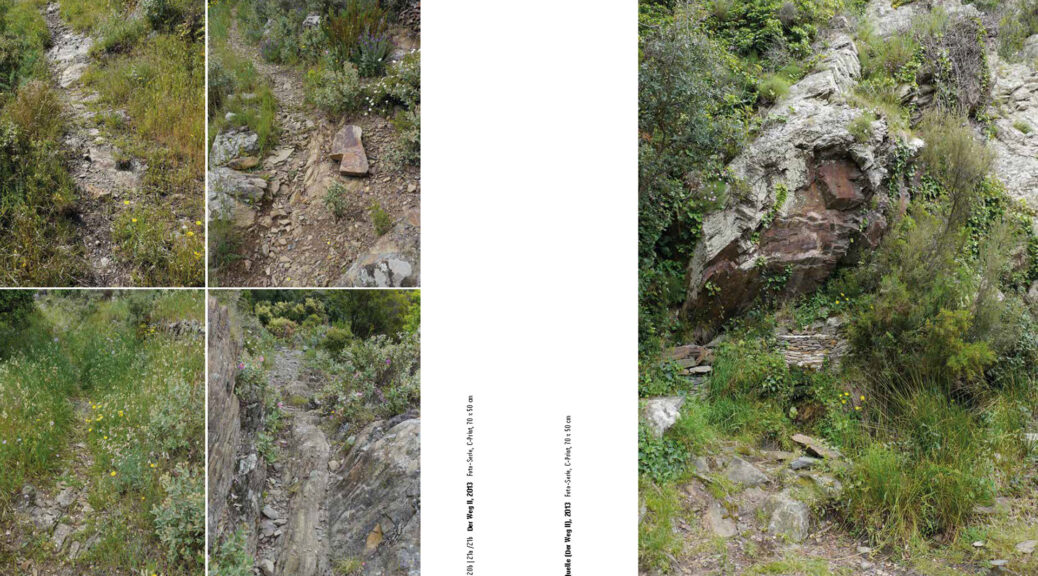
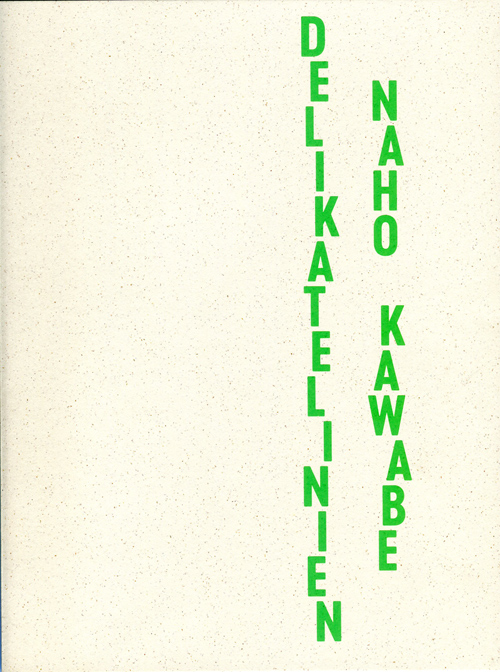
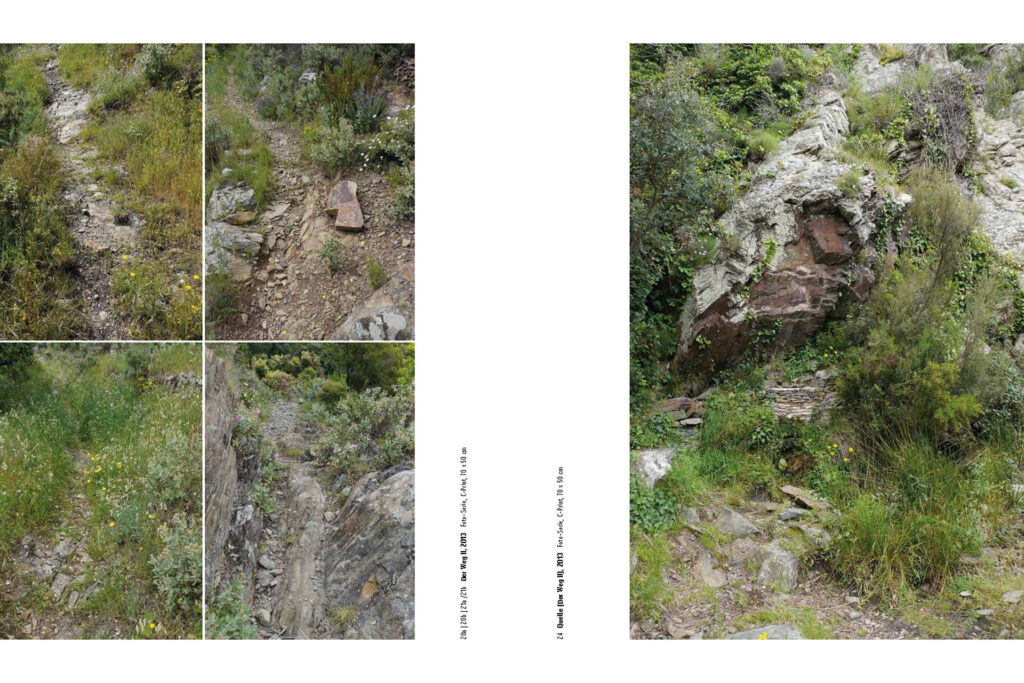
2016
28 x 21 cm, 24 pages
Language: DE
Hrsg.: Naho Kawabe
Text: Waltraud Brodersen
Design: b3K design
Order here:
Sautter + Lackmann (Hamburg)
Waitingroom (Tokio)
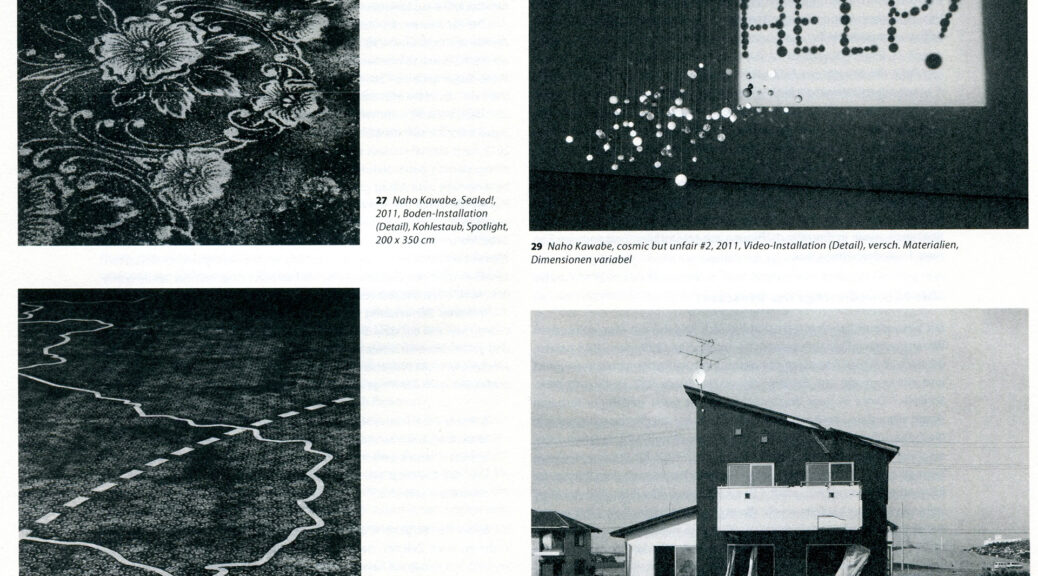
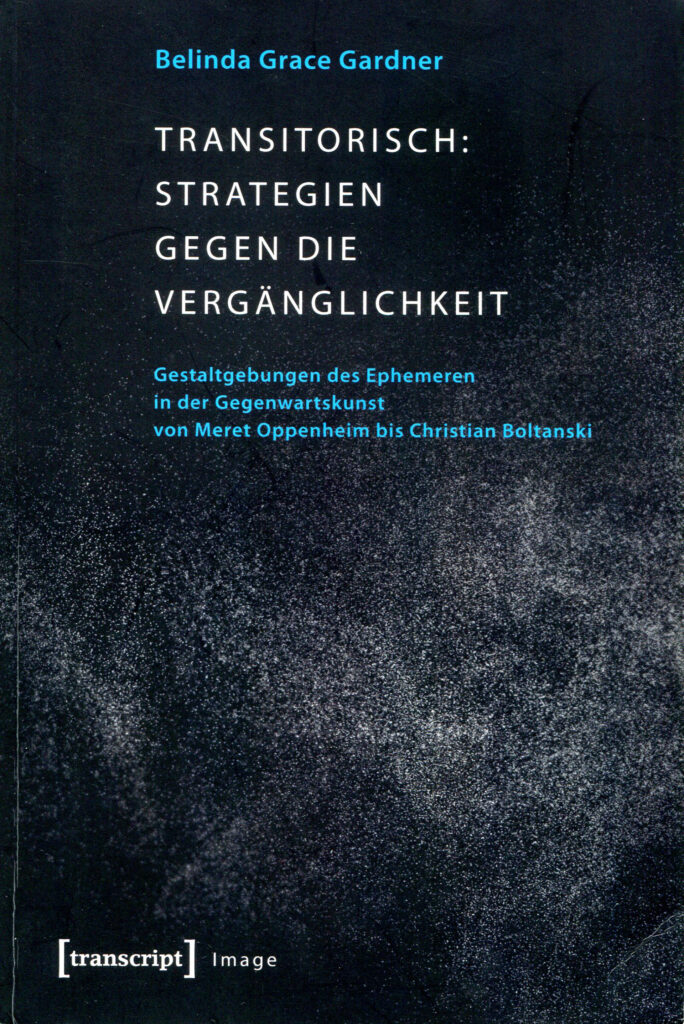
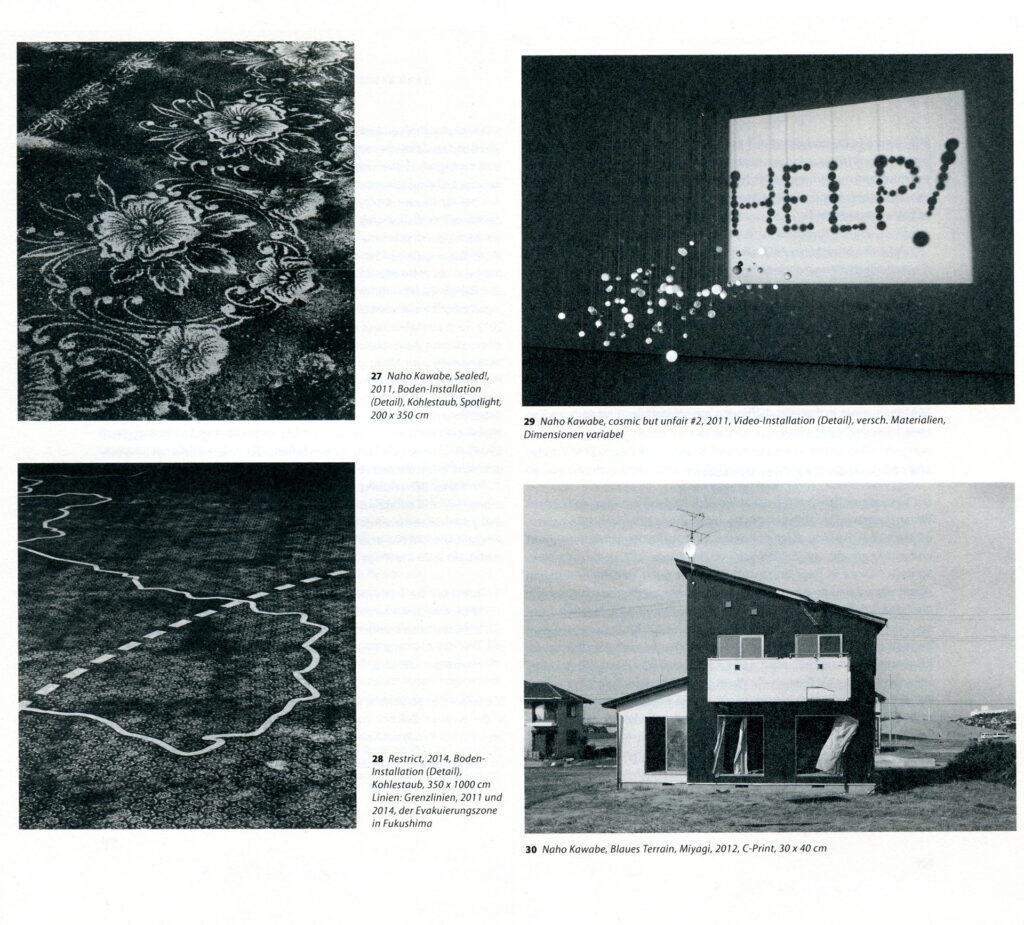
2016, transcript
22,5 x 15 cm, 312 Pages
Language: DE
Hrsg.: Belinda Grace Gardner
Text: Belinda Grace Gardner
Order here: transcript Verlag (Bielefeld)
ISBN 978-3-8376-3767-0

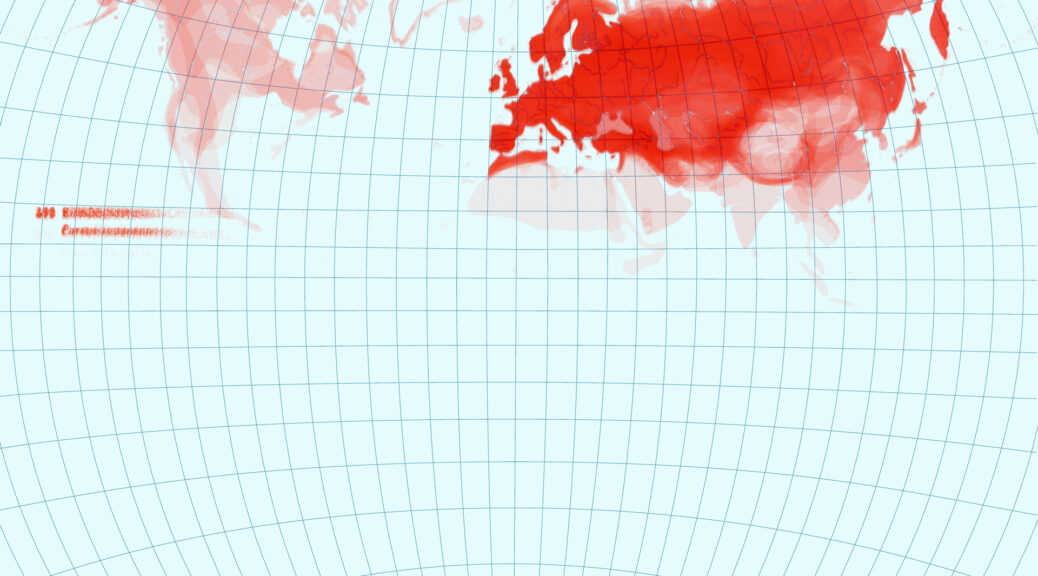
C-Print, 10 pieces, each 40 x 50 cm
The atlas “Die Vogelwelt” from 1962 shows in 420 graphics the distribution of birds inhabiting Europe over all continents. Graphics overlaid with the distribution of 480 species of birds inhabiting Europe. Kawabe overlaid 42 species of birds for each graphic.
Exhibitions: Ermekeilkaserne, Bonn (DE) / Take Maracke & Partner, Kiel (DE)
Image: Katalog “DELIKATELINIEN”
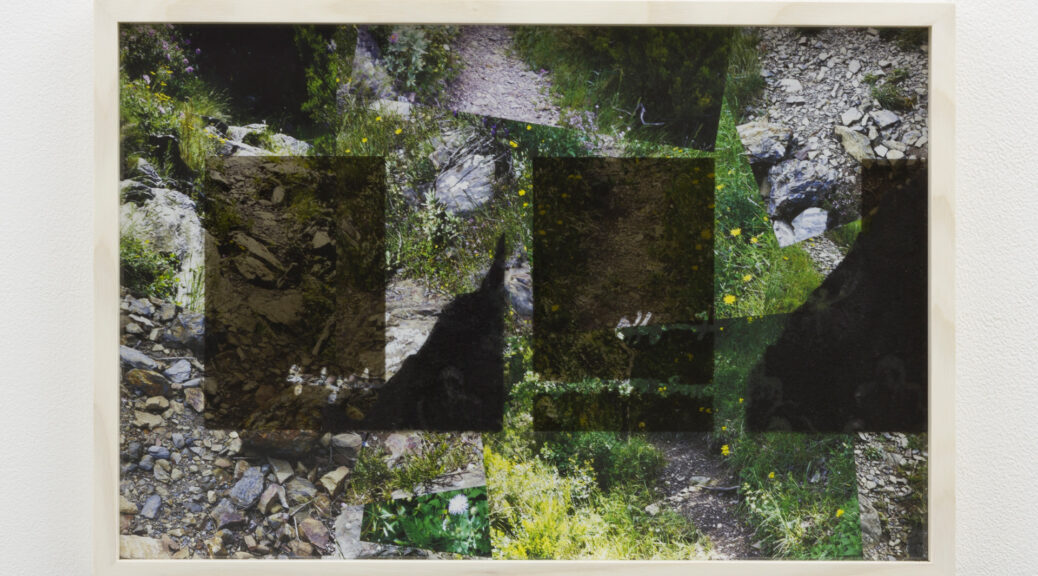
C-print, acrylic lacquer, charcoal, glass, 4 peaces, each 30 x 40 cm
Exhibition: Waitingroom, Tokyo (JP)